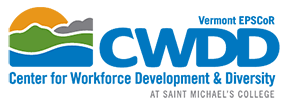
 Main Questions:
Main Questions:1) How does water quality change in response to precipitation events? How do land use patterns affect the physical condition of and water quality in streams?
2) How do macroinvertebrate communities differ in Vermont streams and what do they tell us about stream water quality?
3) How is Vermont's changing climate affecting Vermont streams?
What We Measure:
- In the Field
- General Stream Site Assessment
- The immediate surrounding landscape and the physical characteristics of the stream reach are reported to provide a general description of the site at the time of sampling. Observations and measurements include bank full width, sediment substrate quality, thalweg, and the perceived impact of local land use. This assessment is completed every time prior to water quality grab sampling.
Stream Site Assessment and Thalweg Measurement Form
- Water Chemistry
- Stream water samples are taken for total phosphorus (TP) and total nitrogen (TN) concentrations and total suspended solids (TSS). Blanks are taken for TN and TP. Samples are stored on ice during transportation and are refrigerated or frozen until analyzed.
Water Chemistry Form
- Discharge, Stage & Temperature Sensors
- Discharge, or stream flow, is the volume of water that moves over a designated point over a fixed period of time. The rate of discharge is expressed in cubic meters per second (m3/sec) and is calculated using measurements of stream width, depth, and velocity. A stream’s discharge is directly affected by factors such as precipitation, riparian vegetation, and surrounding land use. The volume and velocity of the water directly impacts water quality and a stream’s ability to support macroinvertebrate life. Discharge is measured by recording the time it takes a tennis ball to travel a specified distance, or by using a combination of a stage sensor and velocity meter. Teams will use both methods to measure discharge in their streams. The use of a water level data logger is ideal because they measure stage at regular intervals and during or after storm events.
Scientists are interested in studying the temperature of bodies of water for many reasons. The RACC research program is interested in temperature data because of its effects on aquatic organisms such as microbes, fish, and benthic macroinvertebrates which are adapted to surviving within certain temperature ranges. RACC teams deploy iButton temperature sensors in the streams to track temperature data from summer through the fall.
Discharge Data Form
Sensors Data Form
- Soil Sampling
- Soil samples are taken to see how phosphorus concentrations change from the upland areas through the riparian corridor to the edge of the stream. Soil sampling transects run perpendicular from the stream.
Soil Sampling Form
- Macroinvertebrates
- Benthic macroinvertebrates are collected from a representative riffle in the stream reach by the hand-scrub method according to protocols used by the Biomonitoring and Aquatic Studies Section of the VT Department of Environmental Conservation. Samples are collected every 2-3 weeks during the late summer/early fall.
Benthic Macroinvertebrate Habitat Form and Macroinvertebrate Data Form
- In the Water Quality Lab - The water quality labs at Johnson State College and Saint Michael's College train undergraduates in basic laboratory procedures and water quality assays while maintaining a high quality dataset. Undergraduates analyze stream water samples collected from the field under the direction of the research technicians and faculty mentors.
- Total Phosphorus
- At Johnson State College, samples are analyzed for total phosphorus via a persulfate digestion followed by analysis for orthophosphate concentration using the ascorbic acid reduction method on a UV 1800 spectrophotometer. This assay was adapted from "Standard Methods". The concentration of total phosphorus is measured in µg/L.
- Total Suspended Solids (TSS)
- At Saint Michael's College, TSS is measured according to method 2540 D of the Standard Methods for the Examination of Water and Wastewater. A known volume of water is run through a 0.45 µml filter. Solids collected on the filter cause a change in filter weight that is reported as total solids in mg/L.
- In the Macroinvertebrate Lab - The macroinvertebrate lab trains students in the sampling, preservation, and identification of aquatic benthic macroinvertebrate specimens common to streams of the northeastern United States. Students analyze samples with the goal of identifying most specimens to genus. However, due to the complexity associated with their identification, the Chironomid order and many worms are only identified to family. The "Guide to Aquatic Invertebrates of the Upper Midwest" and "An Introduction of the Aquatic Insects of North America" are the most commonly used keys. Students may also use the VT EPSCoR Macroinvertebrate App (download for FREE from iTunes).
- The primary indices used to assess the health of macroinvertebrate communities are:
- Total Abundance
- Species Richness
- Dominance
- Evenness
- EPT Richness
- EPT Abundance
- Abundance of hydropyschid caddisflies
Calculation of Metrics Form

